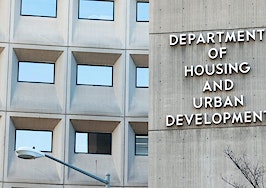- Millennials (people under 35) represent 48 percent of the population but 60 percent of rental assistance recipients.
- Black Americans represent 13 percent of the U.S. population and about 41 percent of rental assistance recipients.
- "Central city" residents represent about 28 percent of the U.S. population but comprise 44 percent of rental recipients.
- Whether the number of available rental vouchers will increase, remain stable or decrease will largely depend on how local housing authorities decide to absorb the cuts.
In order to pay for a 50-percent increase to the nation’s defense budget, the Trump administration this week proposed to cut funds from a number of other government areas — including $6.2 billion, or 13 percent, from the Department of Housing and Urban Development.
“Under the proposal, direct rental assistance payments — including Section 8 Housing and housing vouchers for homeless veterans — would be cut by at least $300 million,” reported The Washington Post last week when preliminary numbers were first revealed.
According to an analysis released today by Trulia, there are certain groups that will be disproportionately affected by the cuts to rental assistance:
- Millennials
- Urban renters
- Black renters
Young inner-city black renters stand to lose out significantly if the budget is passed as proposed.
The numbers: Who’s affected
Trulia decided to dig into the “wealth of data from the U.S. Census Current Population Survey (CPS) on where and who benefits from rental assistance programs,” the company’s chief economist, Ralph McLaughlin, stated in a blog post about his analysis.
McLaughlin took the 2016 CPS Annual Social and Economic Supplement and found that the following groups are most likely to be affected by rental assistance cuts:
- People under the age of 35, who represent 48 percent of the U.S. population but comprise almost 60 percent of rental assistance recipients
- Black Americans, who represent 13 percent of the U.S. population but comprise about 41 percent of rental assistance recipients
“This overrepresentation of African-Americans likely mirror broader socioeconomic disparities between whites and blacks, such as income, homeownership, and education,” wrote McLaughlin.
There wasn’t a big gender impact, McLaughlin told Inman — women make up 51.01 percent of the U.S. population and comprise 50.57 percent of federal rental assistance recipients.
The numbers: Where they live
Beyond the population age and race demographics, McLaughlin also found that there are some discrepancies between where most rental assistance recipients live and population averages.
“Central city residents,” people who live in urban areas, represent about 28 percent of the U.S. population but comprise 44 percent of rental recipients.
“On the other hand, suburbanites are underrepresented,” wrote McLaughlin. People who live in the suburbs represent about 45 percent of the population but comprise only 31 percent of rental recipients.
And rural representation appears to be about proportionate — about 13 percent of the U.S. population lives in a rural area, and about 14 percent of all rental assistance recipients live in rural areas.
According to additional data from McLaughlin, inner-city young black Americans (who can be found inside the Venn diagram overlap of the three most-affected population sets) are likely to be disproportionately impacted by any rental assistance cuts — they represent 3.15 percent of the U.S. population but comprise 14.29 percent of federal rental assistance recipients.
What’s it mean?
“The amount of disproportionality is perhaps the most surprising thing about this,” McLaughlin told Inman. “We all know that there are social disparities among young households, African-Americans and people living in cities, but I didn’t realize the extent to which that would play out.”
And nothing in the budget dictates exactly how any rental assistance cuts would be tackled — that’s going to be up to the local housing authorities that administer assistance, including the Housing Choice Voucher Program (Section 8), to citizens.
“The $3 billion question here is how that potential cut would actually affect the number of voucher-holders in the United States,” McLaughlin pointed out. “Voucher funding is primarily controlled by local housing authorities, and they have discretion about how to absorb cuts.
“So cuts could mean that just administrative costs are reduced and there’s no effect on voucher-holders; cuts could mean that no new voucher-holders will be allowed into the program; or it could mean, in a worst-case scenario, that there are actual reductions in the number of vouchers that are provided,” McLaughlin said.
“We don’t yet know how it will play out because the power of the purse is decentralized in the U.S. to these local authorities,” he concluded.














